This module is designed to guide you through a process of progressively building the habit of Perseverance in your students. It follows on from the module ‘Building Perseverance’ in Building Learning Habits – phase 1.
It invites you to undertake some rich activities in the form of learning experiments in your classrooms, helping you to organise your own discoveries and extend your own understanding of the power of building students’ learning habits.
Work through sections 1 – 3 where you will consider:
- Perseverance and how it develops. Unpick the Perseverance grid and plot where your students are now
- Teaching for learning; activities and talk. Look for ways of building Perseverance into learning activities/tasks and the learning language.
- Team reflection and planning. Share the impact of your experiments with colleagues and plan what you need to do next.
Section 1: Perseverance and how it develops
1.1 What is Perseverance?
“Attention can be broken when learning gets blocked, but good learners have learnt the knack of maintaining or quickly re-establishing their concentration when they get stuck or frustrated. The quality of stickability or perseverance is essential if you are going to get to the bottom of something that doesn’t turn out as quickly or easily as you had thought, or hoped.
If you get upset and start to think there is something wrong with you as soon as you get stuck, you are not going to be able to maintain engagement.
Instead, all your energy will go into trying to avoid the uncomfortable feeling, and this may mean drifting off into a daydream, creating a distraction, or blaming somebody else. A great deal of classroom misbehaviour starts this way. If students were better equipped to cope emotionally with the inevitable difficulty of learning, they would mess about less. There is a range of things that teachers can do to strengthen students’ stickability.
Building Learning Power, Guy Claxton
Perseverance is often undermined by two common and erroneous beliefs. The first is that learning ought to be easy. If learners think that they will either understand something straight away, or not at all, then there is simply no point in persisting and struggling. The second is that bright people pick things up easily, so if you have to try it means you’re not very bright. Clearly the idea that effort must be symptomatic of a lack of ability makes persevering an unpleasant experience. Good learners develop perseverance when their parents and teachers avoid conveying these messages, even unwittingly.”
Extract from Building Learning Power, by Guy Claxton
In a nutshell…
Perseverance is about;
Keeping going in the face of difficulties; channelling the energy of frustration productively; knowing what a slow and uncertain process learning often is.
A mature learner understands that real learning requires effort and persistence, relishes opportunities to struggle with challenge, and believes that with effort they can become a more effective learner.
What do you think?
- Are you aware of students who prefer to succeed at ‘easy’ work ?
- Are you aware of students who are over-anxious to get things ‘right’?
- Does your reward system reward attainment over ‘having a go’?
- Are you aware of parents who view success mainly in terms of achievement and progress?
Make a note of…
- Students who remain optimistic when faced with challenge
- Students who remain optimistic after making a mistake
1.2 How perseverance might build when we nurture it
Being perseverant isn’t something that switches on on good days and off on bad days. Perseverance grows and builds when it’s nurtured and supported. Furthermore, being perseverant involves gaining control of a range of linked skills and emotions. Take a look at how progression in Perseverance might grow across five components.
Cast your eye over the ‘big picture’ of growing Perseverance below. Then move on to finding out what the columns and the rows are all about.
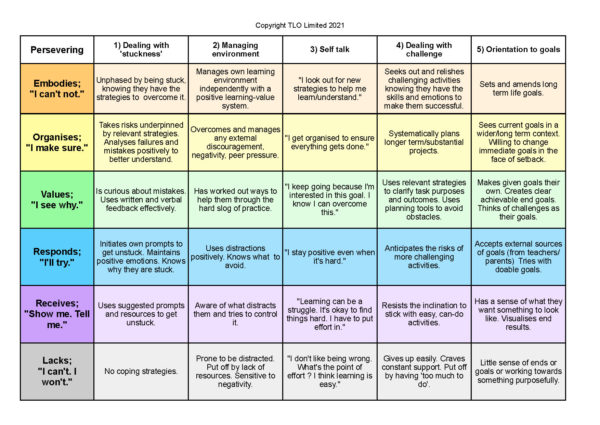
1.3 Unpick the columns; what contributes to a readiness to Persevere?
The grid columns are things that might combine to make up the skills and attitudes of a Perseverer.
Overview of the grid
Perseverance is about the way we stick at things even when they are difficult. It’s one of the most useful but neglected learning behaviours. What makes us able to persevere more and more usefully? We think several things come into play here. How you are willing and able to deal with being stuck, how you are able to manage distractions and manage the learning environment, how you relate to a challenge and whether you are influenced by goals whether they be your own or imposed by others. All these things contribute to being able to persevere. And lastly there’s your own little voice of self-awareness: what you say to yourself and how this influences your beliefs and values.
Take a closer look at what each column of the grid is about
 1) Dealing with ‘stuckness’
1) Dealing with ‘stuckness’
How we deal with being stuck
- Column 1 is all about way how we react when we get stuck; the strategies we have for overcoming it; being brave about not knowing something; how we cope with making mistakes; how we benefit from feedback about mistakes or being stuck; how we come to love mistakes, become curious about them and learn from them. There’s a long and winding road buried in the statements in this column and the role of the teacher is to ensure students make a significant start on this journey.
 2) Managing the learning environment
2) Managing the learning environment
How adept we are at maintaining focus
- Column 2 is about how we manage our learning environment; the extent to which we can manage our own learning climate, ignore or manage distractions, regain focus if lost. Since much of students’ learning takes place in a classroom, they need to be able to manage and take advantage of that environment. They learn to understand just what distracts them from learning and why distractions can be both a help and a hindrance. How they need to learn to overcome the hard slog of practice and use their environment to help. How the learning environment can include all sorts of negativity from others and how they might overcome these disruptive emotions. The learning environment itself has many facets that can trip up and stall learning.
 3) Self-talk
3) Self-talk
The voice of self awareness
- Self-talk is what we say to ourselves as we learn. The statements capture what someone in each phase of the grid might be thinking. Students may use some of these phrases when talking with you, or in writing from time to time, but mostly self-talk goes on inside their heads. We have shown a small flavour of self-talk thoughts that teachers can encourage students to imitate. Some relate to standards, others to self-monitoring, or flexibility. All such self-talk is important in building a persevering habit.
 4) Dealing with challenge
4) Dealing with challenge
The relationship we have with challenge
- Column 4 is about how we relate to challenge: are we more excited by the prospect of triumphing over challenge, or more afraid of failing when faced with difficulty? Challenge needs to be included here with Perseverance because there is little need to persevere with easy, familiar activities. Students need to be challenged even for us to discover how or whether or not they persevere at all. So the growth of ways to cope with challenge helps to cement Perseverance too. Here they learn to enjoy a challenge and recognise the satisfaction of triumphing over difficulty. The phases include practical ideas like recognising risks, sorting out what the challenge is fundamentally about, and using tools to plan and avoid obstacles.
 5) Orientation to goals
5) Orientation to goals
How our orientation to goals influences our determination to persevere.
- Column 5 concerns goals; having goals can have an impact on our perseverance. Let’s face it, if you haven’t got a goal, or at least an interest in something, you are not likely to stick at it and channel your emotion positively to get it done. In the beginning students have little sense of goals or purpose but this can be turned into being able to imagine what something might look like. Later students can be helped to understand what a ‘do-able’ goal is and how to turn goals set by the teacher into a goal that they want to achieve – to make it their goal. A wanted goal is something you put effort into. Later phases in this development include being able to put your goals into a wider context, to realise that being able to do X or Y isn’t just about the here and now but has wider implications for life. This will certainly come into play when choosing options, for example. Do students go for something they like, enjoy and find easy or do they chose some options on the basis of their relevance to their future career? It’s a hard and grown up sort of decision to make. This orientation to goals all turns on how we design our own goals, blend these with the goals of others, and then pursue them with tenacity and independence.
What do you think?
- What have you learned about Perseverance from these descriptions?
- What have you had confirmed?
- What surprised you?
- How have your views changed?
Make a note of…
- Any ideas for practical classroom experiments that these descriptions have triggered.
- Which column your students are most secure in.
1.4 Unpick the rows; getting better at Perseverance
Of course the development of Perseverance does not grow neatly up each column or evenly across the phases in the grid. The five broad phases of dispositional growth (purple – orange) are affective ways in which people may be inclined to behave: we call this inclination ‘mindedness’.
Here is our interpretation of how Perseverance might grow.
Meaning behind the phases
The phases are drawn from Bloom’s taxonomy of the affective domain.
Phase ‘Receives’ (purple) is about doing something because you are told or expected to.
Phase ‘Responds’ (blue) is about gaining interest and doing things more willingly.
Phase ‘Values’ (green) is a key phase since the student now sees the value of behaving in this way. It’s a win for them; to behave like this is in their interest. It’s in this phase that the behaviour becomes more secure.
Phase ‘Organises’ (yellow) is the phase in which the student capitalises on this ‘in their interest’ behaviour and gets themselves organised to use it positively.
Phase ‘Embodies’ (orange), known as ‘characterised’ in the original taxonomy. In this phase the student has made this behaviour their own. It has become part of their character; they can’t not do it and they have become highly skilled in doing it.
We urge you to see this progression as long term. Some phases will take years for people to work through; some will never be worked through. None of the phases are inevitable. There is a lifetime of development captured here. Nevertheless the role of a teacher or parent should surely be to encourage and enable this journey.
Lacks: Minded to give up easily and be needy for support
 In this ‘Lacks’ (grey) phase, students are minded to give up easily. There are all sorts of reasons for this; they may just be constantly distracted from the activity in hand; they may just need constant support from an adult; they may not know which resource might help them or they simply don’t know what stuck means, let alone how to get unstuck. Many students will need to be eased into learning how to learn in a classroom setting and how/what perseverant learners behave/do.
In this ‘Lacks’ (grey) phase, students are minded to give up easily. There are all sorts of reasons for this; they may just be constantly distracted from the activity in hand; they may just need constant support from an adult; they may not know which resource might help them or they simply don’t know what stuck means, let alone how to get unstuck. Many students will need to be eased into learning how to learn in a classroom setting and how/what perseverant learners behave/do.
Receives: Minded to seek to stay in their comfort zone
 In the Receives (purple) phase, students have made a big leap from having a negative mindset to a neutral one. Here they are inclined to play it safe, staying within their own comfort zone to ensure success and avoid perceived failure. They still need adult support to maintain focus and optimism when tackling tasks they perceive as difficult, but beginning to show willing to take more responsibility.
In the Receives (purple) phase, students have made a big leap from having a negative mindset to a neutral one. Here they are inclined to play it safe, staying within their own comfort zone to ensure success and avoid perceived failure. They still need adult support to maintain focus and optimism when tackling tasks they perceive as difficult, but beginning to show willing to take more responsibility.
Responds: Minded to be willing to believe that effort will pay off
In the Responds (blue) phase students develop greater independence and are motivated by trying to reach achievable goals. They are realising that fear, the need for adult support, and distraction can be overcome by having/using more coping strategies and practical ideas to get them unstuck.
Values: Minded to recognise the point of persevering in learning
In the Values (green) phase the student has developed a strong belief that they can get better at learning. They become curious about mistakes and care about the goals they are trying to reach. They develop and use many practical strategies to assist them in dealing with challenge, being stuck and staying focused.
Organises: Minded to learn how to persevere more productively
In the Organises (yellow) phase the student organises themselves to get the job/task/problem done. Risk-taking is underpinned by sound strategies. Failures are analysed for greater understanding. They have accepted responsibility for their behaviour.
What do you think?
- What has struck you about the act of Perseverance having read the descriptions above?
- Which phase do you operate in?
- What makes you say that?
Make a note of…
- What you might do to assist your students to make headway in their Perseverance behaviour.
- Any practical ideas the text has triggered.
Activity 1: Where are my students now?
- Download grid to colour in
- Colour in the cells where you think your students are secure.
- Draw a red line across the grid to denote where you think most of the school’s students could and should reach by the time they leave.
- Please take the results of these tasks with you to the Professional Learning Team session shown in Section 3
Section 2: Teaching for learning; activities and talk.
So far, you have:
- Looked at your students through the lens of the Perseverance learning grid
- Gained a sense of what becoming better at Perseverance looks like
Now we look more closely at things you can actually do in the classroom to provoke, guide and support students to get better at Perseverance; to build the phases of Perseverance mindedness.
Go to the phase that you have already identified as the one that most of your students need to develop next.
In each Tab box below you will find; an overview of the teacher’s role; activities to surface Perseverance; some ideas for positive routines you might use (things that should be common across all classrooms); some suggestions for teacher talk and If- Then statements; a reflection/review mat.
Moving from Grey → Purple (Receives)
Receives: Minded to seek to stay in their comfort zone
 In the Receives (purple) phase, students have made a big leap from having a negative mindset to a neutral one. Here they are inclined to play it safe, staying within their own comfort zone to ensure success and avoid perceived failure. They still need adult support to maintain focus and optimism when tackling tasks they perceive as difficult, but beginning to show willing to take more responsibility.
In the Receives (purple) phase, students have made a big leap from having a negative mindset to a neutral one. Here they are inclined to play it safe, staying within their own comfort zone to ensure success and avoid perceived failure. They still need adult support to maintain focus and optimism when tackling tasks they perceive as difficult, but beginning to show willing to take more responsibility.
Behaviours to secure, Moving from Grey to Purple
Perseverance can be promoted both by how you structure the learning environment and how you help students to think of themselves as learners.
Your role as a teacher in this phase is to:
- Introduce the concept of Perseverance in order to avoid students becoming too dependent on adults and begin to understand that being ‘stuck’ is a good place for a learner to be
- Introduce the concept of Managing Distractions in order to help students to focus their efforts on learning
- Introduce the concept of comfort zones in order to help students begin to understand what they find challenging and how they might view failure and mistakes more positively.
In other words you are beginning to make learning visible: uncovering and exploring how it feels, what makes it work, and what the student’s role in the process is to be.
Introducing the concept of getting unstuck
Every classroom needs them!
See also an extract from Learning to Learn – The Fourth Generation, by Guy Claxton
Stuck Posters.
Work with students to find useful questions for them to ask themselves and helpful strategies which they might take when they are stuck. Ensure that there are plenty of options that come higher on the list than “Ask the teacher”. Create displays as reminders.
Extract from Building Learning Power in Action, by Sarah Gornall, Maryl Chambers, Guy Claxton
So called Stuck posters or prompts come in various shapes and sizes, but essentially they are simply home-made lists of what students can try when they get stuck with their learning: ‘Read the question again’, ‘Split the question into smaller bits’, ‘Try sounding the word out letter by letter’, ‘Ask your neighbour’ — that kind of thing. If the teacher were simply to photocopy the list from a L2L manual and stick it on the wall it wouldn’t work. But in a BLP classroom, the ideas are generated by the students themselves, and are the subject of continual debate and refinement.
“Instead of simply dishing out more good advice to students-as-consumers, classrooms are becoming places of day-by-day knowledge generation about learning”
Students are challenged to produce a continual stream of ever more sophisticated ideas about how they can boot-strap their own ability to be independent learners, and these are accumulated and displayed as ever-expanding public records of their achievement. To begin with, the teacher trains the students to make use of this information by greeting every request for prompting with; ‘Have you looked at the poster?’ After a while, looking at the poster becomes routine, and eventually, when the habit of self-unsticking becomes second nature, even the poster becomes redundant. It does not take long, in such a Fourth Generation L2L classroom, before ‘Ask the teacher’ becomes a last-ditch strategy, to be engaged only when all else has failed.
By contrast, when effort becomes seen as natural and interesting, the habit of perseverance expands, and a subtle but powerful shift in the classroom atmosphere begins to occur. It is in this kind of way that BLP moves up a gear, from the technical to the cultural. In a sense the STUCK poster is a stand-alone technique, but it can be much more than that if the teacher wants it to be. It can be used as an effective, low-risk, low-investment lever for creating a shift in students’ sense of what is valued, what is normal, and what is the point of their learning — and thus in the quality of their engagement.
A must do part of any BLP classroom
Link perseverance to life in general
A range of short ideas to help students to link perseverance to the world in general.
Use as a start-up activity for introducing Perseverance.
Introducing the learning vocabulary
Distraction scales
Build greater awareness of students’ distractibility and extend the vocabulary about distraction.
Introducing the learning vocabulary and learner self talk
Resource contains:
Have a discussion
A range of short ideas to help students understand Perseverance.
NB. Where we have used the word ‘Resilience’ – please now read ‘Perseverance’
Introducing the learning vocabulary
Nurture the capacity to manage distractions
Distraction Scale.
Work with pupils to describe different degrees of the ability to manage distractions. A 3-star manager might “always keep focused on what s/he is learning” and “Support other learners by helping them to manage their distractions”. Use language appropriate for the age of the pupils. Comment on behaviour to recognise and value the management of distractions. Ask pupils to help each other with ideas about how to earn more stars as distraction managers.
Background Music.
Play music with a tempo of 60 beats a minute at a very low volume while pupils are working. This can help to create a calm environment. Use music to set the atmosphere at the beginning of a lesson and to settle the class. Make this into an experiment. Discuss with pupils what sort of music helps them to concentrate or to think of new ideas, and what sort amounts to a distraction.
Visual Anchor.
In pairs or in groups, ask the pupils to identify the detail of their behaviour and feelings when they manage distractions well. Then ask them to draw a picture of themselves using this learning muscle and stick it on their desks to help them to remember to use this muscle. (NST)
Role Play.
Brainstorm ways of managing distractions with pupils. Ask them to create role-plays, in pairs or groups, about different ways to manage distractions. The whole class then watch each other’s role plays and the effectiveness of different strategies. Extend by writing reminders in thought bubbles for display. (BRM)
Break States.
Change the mental and physical state of the class by using music, quick games (Fizz-Buzz, Simon Says), guided relaxation, Brain Gym (Dennison, 1992), change of partner/desk/lighting, breathing exercises, or a refreshment break. Such activities refresh and relax pupils, enabling a greater degree of focus afterwards. Discuss their impact on concentration and how pupils could use them in other contexts to keep themselves on track with their learning.
Extract from Building Learning Power in Action, by Sarah Gornall, Maryl Chambers, Guy Claxton
Try a quick activity to explore managing distractions
Two activities to introduce students to exploring what distractions are and the things that distract them.
Worth using every so often to gauge improving attitudes
Link managing distractions to life in general
A range of short ideas to help students link managing distractions to the world more widely.
Use as a start-up activity for introducing distractions.
Try a quick activity to introduce the idea of Stuck
NB. Please read Perseverance for Resilience.
A 5 minute activity to introduce students to broad ideas of stuck and perseverance
This resource consists of
Perseverance Thermometer
Develop a greater awareness of students’ tendency to persevere and extend the language of perseverance.
Worth using this a couple of times a term to gauge changes in attitude/improvement in persevering.
Contains
Monitor your own distractions
To help students to monitor their own levels of distraction, ask them to draw a distraction line in their jotter. The line goes from Focused at one end to Distracted at the other. At 5 minute intervals the student is required to make a mark on the line showing their ‘degree’ of distraction. The irony of giving a student who is already at risk of being distracted something else to distract them is not lost on us ! But experience is that for many students this act of self-monitoring helps them to understand what distracts them and their marks move towards Focused as they become better able to self-regulate.
Possible addition – discuss and agree with students some intermediate points between Focused and Distracted.
Alternatively, work with students to describe different degrees of the ability to manage distractions. A 3-star manager might “always keep focused on what s/he is learning” and “Support other learners by helping them to manage their distractions”. Use language appropriate for the age of the students. Comment on behaviour to recognise and value the management of distractions. Ask students to help each other with ideas about how to manage distractions and remain focused.
Both strategies have the advantage of placing responsibility for managing distractions with the learner.
Show an animation
1 minute animation to illustrate an aspect of Perseverance.
Use it to talk about trying other ways to achieve what you want to do.
It’s about shifting responsibility for learning to the learner.
Make your own class animations for different aspects of Perseverance.
Choose from:
- Build in ‘wait time’ in Q&A sessions to give students time to think about your question before offering a response. The underlying message is that good answers take time to come up with and that the quick fire, knee-jerk response needs consideration. It promotes reflection and consideration over instant recall and reminds students that learning requires time and effort.
- Model the Visible Thinking Routine….What do I know? What do I need to know? What techniques do I have for bridging the gap? This helps pupils to develop their own internal dialogue for combating stuck-ness.
- Encourage pupils to identify the cause of their stuckness. Move pupils from saying “I’m stuck” to ” I’m stuck because…” Naming the problem will often suggest a reasonable next step.
- If pupils freeze when they are stuck, offer supportive questions not answers. ‘What do you do next?’, and when this has been done ask the question again. Such ‘support to continue’ prompts are seen as helpful by pupils. You are encouraging them to take over the job themselves and reminding them that uncertainty shouldn’t lead to paralysis. The advantage of asking questions over telling is that you are in a better position to monitor how pupils are learning when they are doing the explaining. Ask pupils how they might check their answers or why they think they are right or wrong. Have them work with each other on this to encourage a learning community rather than just teacher-pupil dialogues.
Teacher talk
To nudge students from Grey to Purple, use language like this to nudge each column of the grid:
Developing strategies to deal with stuckness
- Have a go yourself. I think you can do this.
- Which of your friends might you ask?
- Have you looked at the stuck prompts?
- Well done for sticking at it by yourself.
- What have you already tried? What else might work?
- Which ideas on the stuck prompts might work here?
- There are some good ideas on the learning wall you could try
Enabling the management of distractions
- What might put you off?
- What might get in your way?
- Do you sometimes distract others?
- How might they feel when you do that?
- What could you do to avoid being distracted?
- Where are you now on our distractions scale?
- How well have you managed your distractions today?
Find what is challenging and viewing failure positively (Comfort zones)
- Are you finding this too easy?
- That would be a waste of your time.
- Let’s find something more useful/challenging.
- How could you challenge yourself a bit more?
- Don’t take the easy way out!
Developing the ability to visualise end results
- What are you hoping to achieve?
- What will it look like when you have done it?
- Begin with the end in mind . . .
- Let’s imagine what success will be like
An If – Then suggestion,
If I get stuck → then I can look at the stuck prompts for help.
If I get bored with something (a task) → then I will go find something really interesting to do.
If I think there’s too much here to do → then I will break it down into small steps.
When I am choosing what to do I will choose something a bit harder than last time.
If I am not sure what to do, then I will ask myself what it will look like when I have finished
Learning Mats
A Learning Mat is a simple tool to encourage students to become more self-aware of how they are using a learning habit. Basically, it’s an A3 or A4 laminated sheet that is kept on tables or used as part of wall display. It shows various aspects of a learning habit. Students refer to them during lessons, using them as prompts about the finer aspects of a learning habit that are being stretched. They help students to be able to join in meta-cognitive talk.
Download as a Word document Download as a PDFThis mat is blank. You will find one that has suggested behaviours on in the Value/Green section. In this one you and your students could fill in some ideas for specific Receive/Purple behaviours that you want your students to start using. They can of course be individualised for specific students.
Using Learning Mats
You could also use Learning Mats (in ‘teacher speak’ or ‘student speak):
- To raise awareness of the habit
- To spread the school’s common language for learning
- As an aide memoire for students and teachers
- As a self-assessment support for students
- As an audit tool to support teacher planning. i.e. which of the skills are implied in the lesson plan and therefore how will they be surfaced in what you draw attention to/orchestrate the lesson.
Key Task
- Which behaviours will work best with your class or group of students?
- Which of the ideas are you thinking of trying out?
- Please take your ideas to the Professional Learning Team session.
Section 3: Team reflection and planning
Session agenda
1. Session objectives
What do we want to achieve? ( 5 mins)
2. Sharing classroom experiments
How did our experiments go? ( 20 mins)
Share
- the changes in practice you tried
- how students reacted
- what you learned
- what next as a result
Probe
- what was getting in the way?
- what seemed difficult?
- what would make it easier?
- what made it work particularly well?
- why it was successful?
- changes in your behaviour
Impact (general)
- improvements in students’ behaviour
- increased focus
- more enjoyment in learning
- more/renewed interest in the subject
- greater harmony in the classroom
- more willingness to try, and try different ways
- more positive about themselves as learners
- Avoidance of…..
- Improvements in……
- Increases in…….
- Little of no changes in…
Impact ( specific)
- You could consider the behaviour-specific improvement indicators for the learning habit you were improving. (i.e. as shown for this behaviour in section 5c below)
3. Recapping on-line materials
What did we think of the materials? ( 15 mins)
Reactions to
- The Perseverance grid
- Where students are secure
- Where the students could be when they leave secondary school
- Activities and talk ideas
4. Planning what to do
What do we need to do next? ( 10 mins )
Decide
- Which ideas should we all adopt as a school strategy?
- How the progression of perseverance should be built across the school. ie how the phases of perseverance might play out against key curriculum stages and even year groups.
5. Personal action planning
What am I going to do? ( 20 mins )
5a Consider
- how you want your students to improve/develop/enhance their approach to persevering ?
- what you are going to do to bring this about?
- develop your enquiry question.
Think of it like this…
If I do XXXX will it improve/develop/enhance YYYY
This is the crunch question. Your students are unlikely to change unless you change!
Capture your learning enquiry as a question
5b. Put a short enquiry plan together
Personal-Action-Plan-Perseverance.pdf5c. Things you might want to look out for that result from your classroom experiment:
- a willingness to spend more time on task. All types of task? Some types? Which?
- showing less stress or worry about being stuck or challenged
- reduced reliance on external support
- developing their own ways of dealing with being stuck
- greater confidence in themselves
- recognising that getting stuck is normal and helpful
- willingness to try other ways of tackling a task
- greater engagement with tasks
- improvement in their belief in themselves as learners (growth mindset)
- others you may have observed…
6. Evaluate team session:
How did we do as a team? ( 5 mins )
[/dropshadowbox]
We wish you well with your rich activity/learning enquiry. Do let us know how it went…
Maybe you would like to write a blog about it to feature on our website for the benefit of the Building Learning Power community.

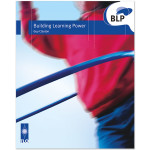

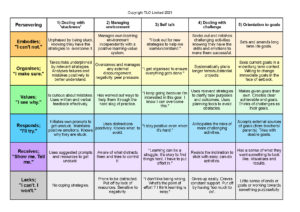
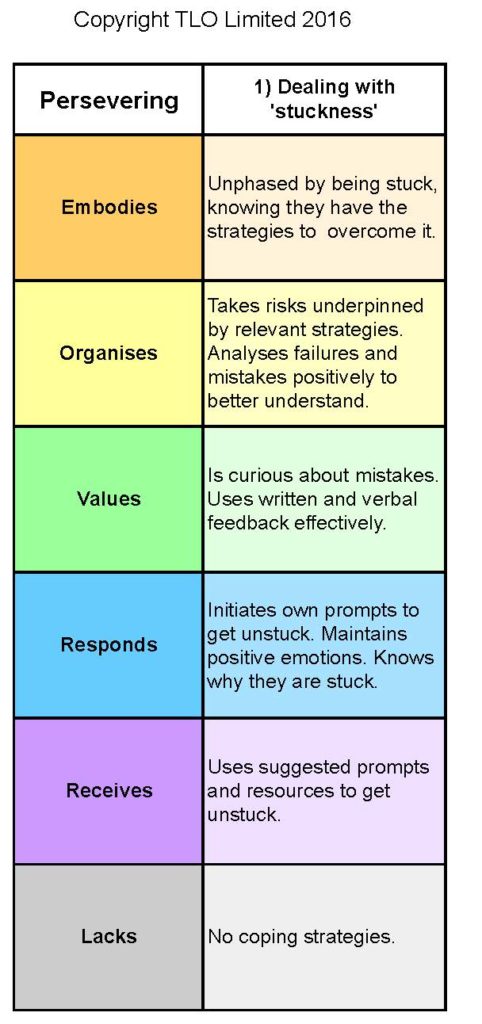
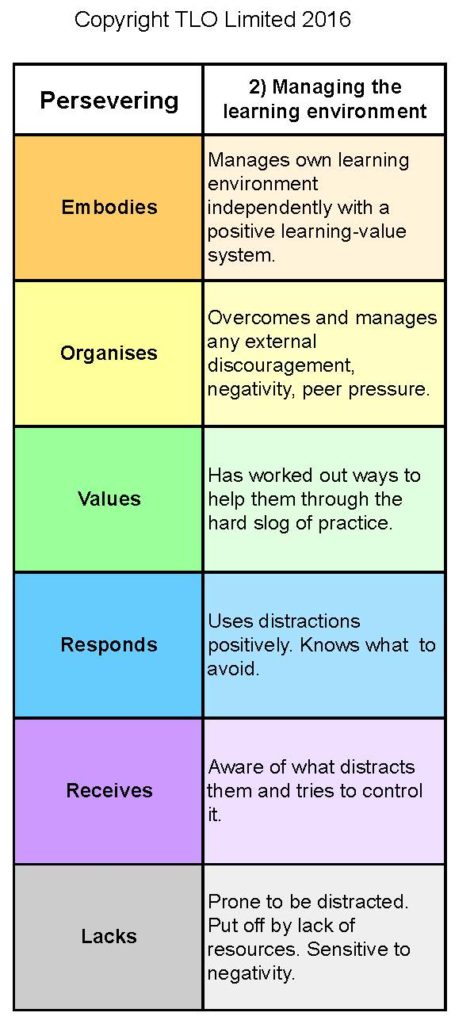
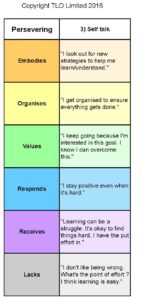
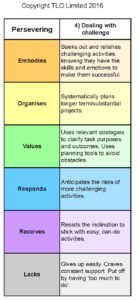
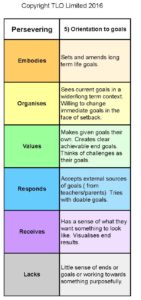




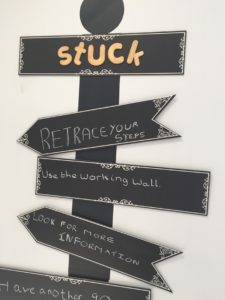
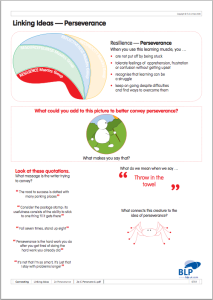
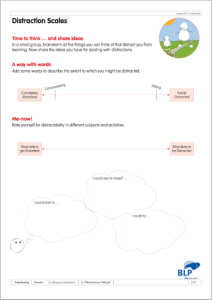
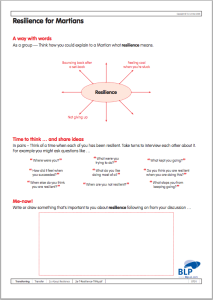
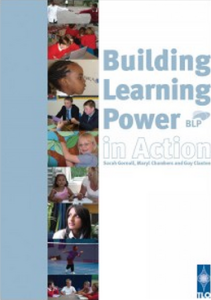
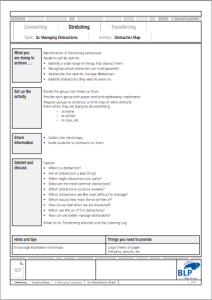
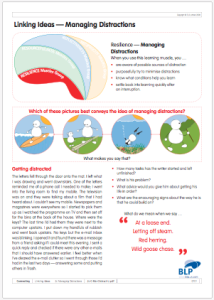
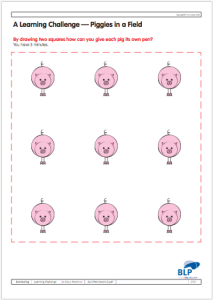
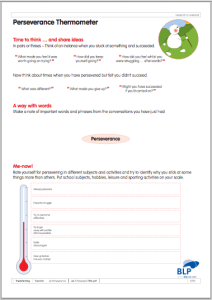
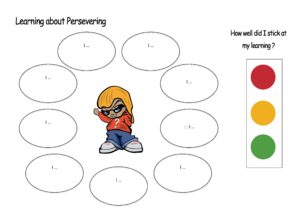
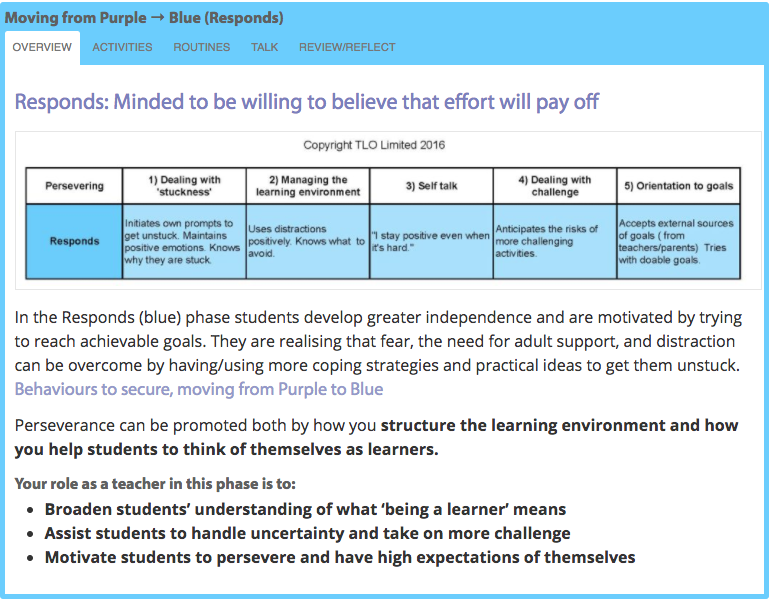
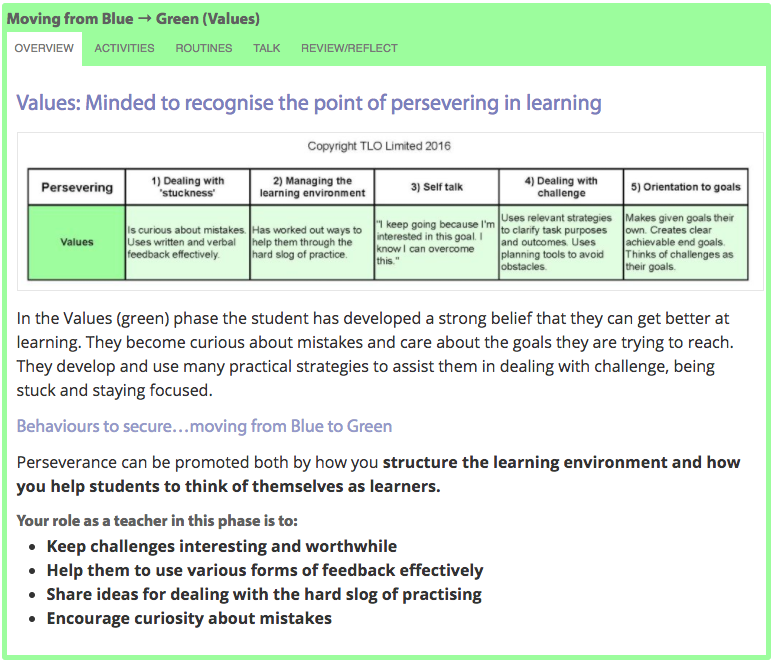
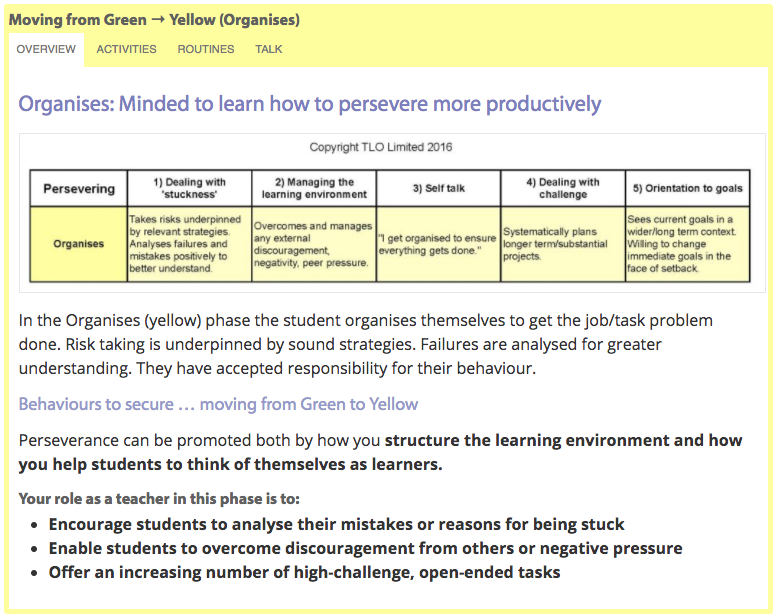
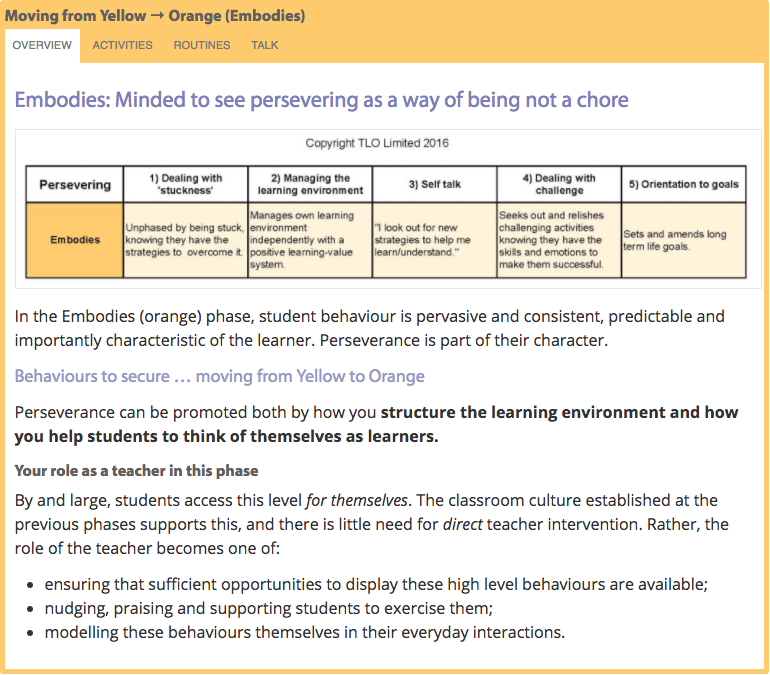
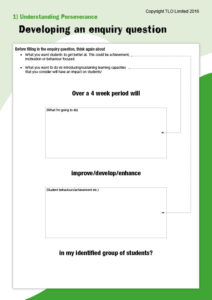
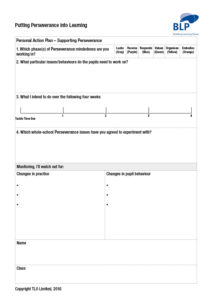
Comments are closed.